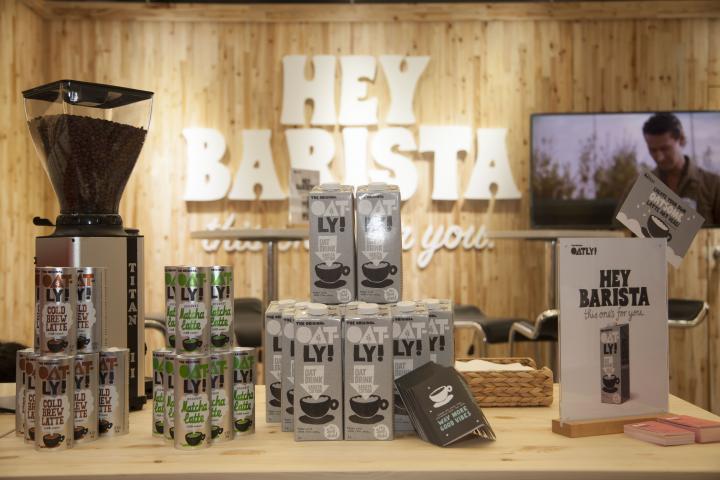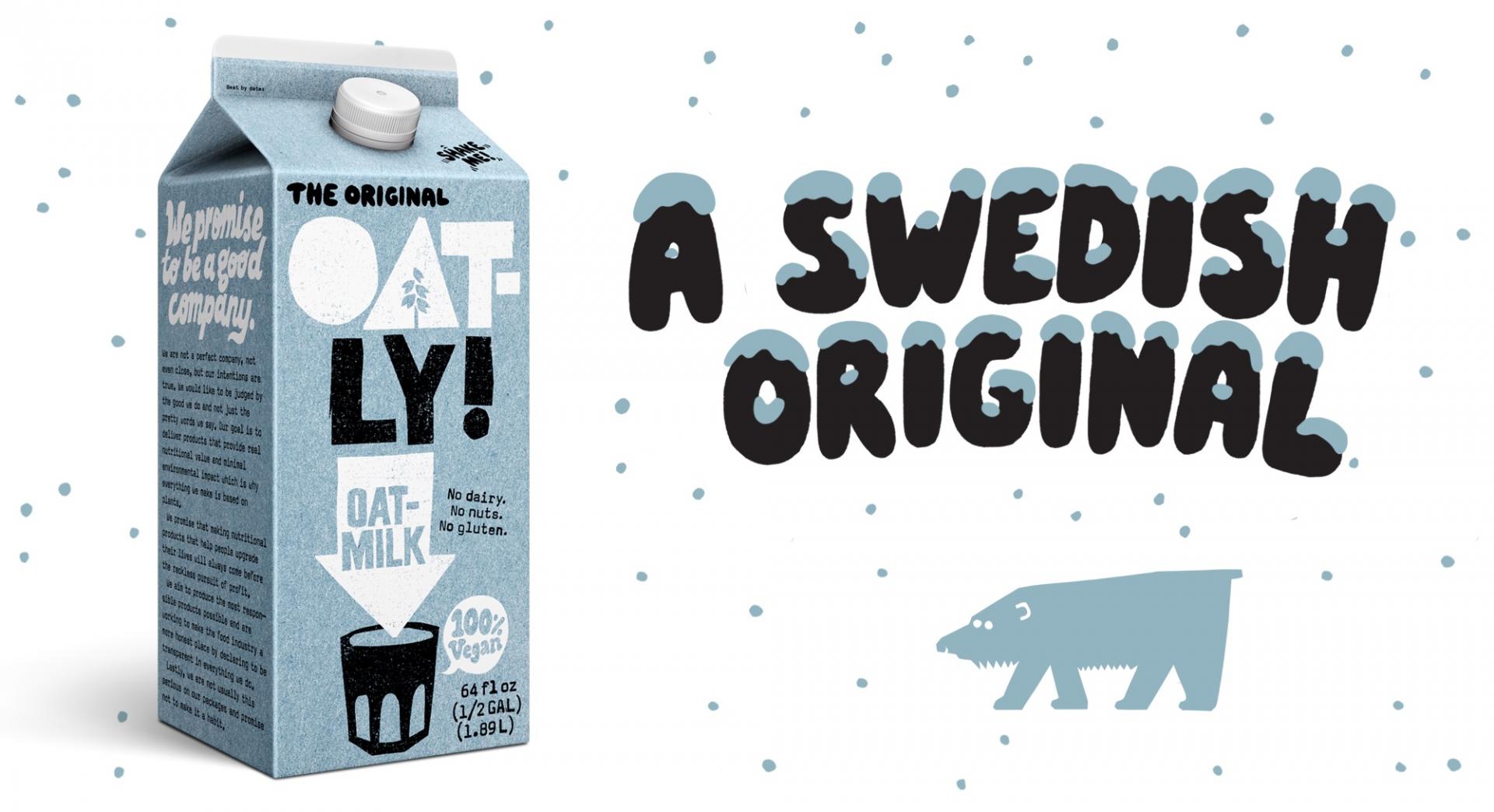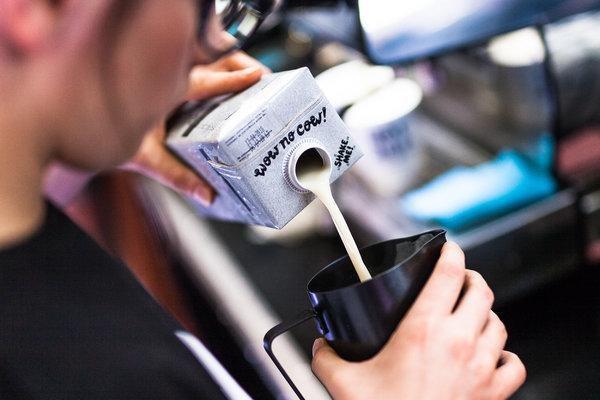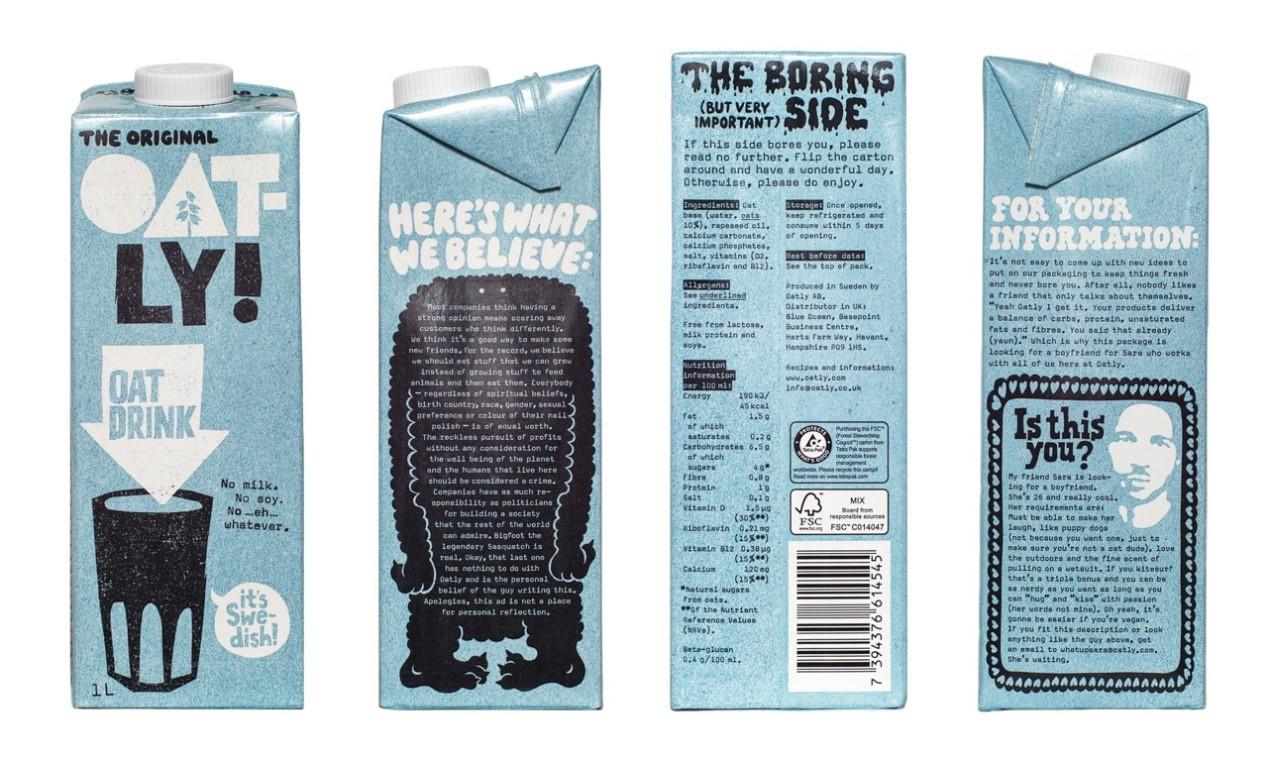

Considering that 70% of the global population don’t produce the enzyme lactase to properly break down lactose – the sugar found in dairy products – cow milk’s rise to become one of our staple food items has been a marvel. But this is about to change because of the appearance of plant milk branding.
As consumers grow increasingly aware of cow’s milk nutritional shortcomings, demand for dairy milk has been declining. At the same time, in the United States, plant-based milk sales rose to more than $2 billion in 2017, up 61% from 5 years earlier.
One company in particular has been leading the plant milk race with branding: Oatly. Founded 25 years ago, the Swedish company first tiptoed into the United States 2 years ago by persuading small coffee shops to use its product. Today, Oatly is expanding its product line in the US and is slowly popping up at coffee shops all around the world. By using the 4 facets of brand positioning, let’s examine how Oatly rose to prominence and maintained its success.
The myriad health benefits of oat milk make it a clear winner among the many milk alternatives available on the market. It is low in overall calories, cholesterol and saturated fat while being rich in dietary fiber, which is almost nonexistent in cow milk. What makes Oatly a standout, however, is its rich and smooth texture resembling that of actual whole milk. The addition of canola oil, a plant-based fat that holds foam like dairy milk, gives Oatly a full and delicious texture that is normally absent in other plant-based alternatives. As a result, Oatly became an instant hit among baristas in the café scene and among health-conscious individuals who are also regular coffee drinkers.
When Rickard Oste first founded Oatly, he saw an opportunity to use oats (it was a particularly abundant crop in Sweden) as a milk source to cater for those who were allergic or lactose-intolerant to dairy. As the company grew, Oatly’s vision remained the same but also to “provide a more sustainable option that’s gentler on the plant compared to traditional dairy milk.” In other words, they wanted Oatly to become a dairy milk substitute that is good to the planet and the drinker. It certainly seems that they are living up to that promise.
Most people assume plant-based milk production causes less ecological damage than dairy production. But while the statement is generally true, not all plant-based milks are created with the same process. Almonds, for example, require 6 times more water to grow than oats do. Soy? A whopping 21 times. So, oat milk not only tastes good, but also has a lot less carbon footprint compared to other milk substitutes.

Oatly
Oat milk, while popular in parts of Europe, has been mostly a fringe product in the United States. So instead of introducing its product on grocery shelves when the plant milk branding entered the US market, Oatly opted for a different distribution strategy. The company persuaded small coffee chains and specialty coffee shops to use its products.
By doing this, Oatly successfully integrates itself into the “hipster” coffee culture – the artisan coffee shop with minimalistic interior, where baristas explain the flavor of different coffee beans and perform latte art in front of you.
Gone is the Starbucksification of coffee. In this new wave of coffee culture, the coffee drinking experience is centered around aesthetics, high-quality ingredients and transparency in the creation process (Starbucks is itself trying to catch on with its new Reserve Roastery stores). When consumers see baristas – the taste makers and influencers in the brewing and roasting community – use Oatly, the “hip” vibe associated with café culture is indirectly projected onto the brand. This creates the key emblematic moment – customers go to their favorite artisan coffee shop, grabs a coffee made with freshly grounded and aromatic coffee beans, infused with a cup of healthy yet delicious Oatly milk.

Oatly
Besides of a great product, Oatly is also known for its creative, graphic-filled packaging and sleek carton design.
Oatly’s cheeky advertisements and taglines also often carry a tone that is self-deprecating and funny. Here are just few examples:
“It’s like milk, but made for humans.”
“We know how it sounds. Tall, blond, beautiful, hard to get, extremely liberal with no sense of attachment or responsibility whatsoever. Sorry to disappoint you, that’s just not us.”
Combined, Oatly is like that witty friend who is not afraid to voice out his or her opinions on controversial issues. This friend might be a little assertive at times, but ultimately is still someone you appreciate because of his or her authenticity and honesty. If Oatly were a person, it is who you would want to hang out with.

Oatly
Today, with the increased accessibility of information and the plethora of products available on the market, consumers are more conscious of their purchases and more willing to try out new products than ever before. It is up to brands to rise to the occasion by not only delivering a great product, but also to consider the touchpoints that reach the customers and the messages that are going to be embedded in the marketing materials. For Oatly, it has successfully achieved that by fully committing to its noble cause and carefully crafting its brand image to be relevant yet emotionally resonant. As Oatly’s Creative Director John Schoolcraft puts it, “We don’t really think of ourselves as a corporation. We’re real people working together to try to help other people get a good product.”
A Labbrand Group Company © 2005-2024 Labbrand All rights reserved
沪ICP备17001253号-3To improve your experience, we use cookies to provide social media features, offer you content that targets your particular interests, and analyse the performance of our advertising campaigns. By clicking on “Accept” you consent to all cookies. You also have the option to click “Reject” to limit the use of certain types of cookies. Please be aware that rejecting cookies may affect your website browsing experience and limit the use of some personalised features.